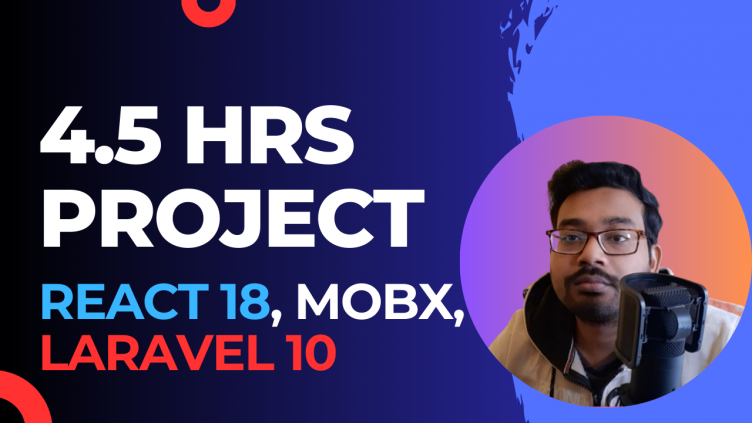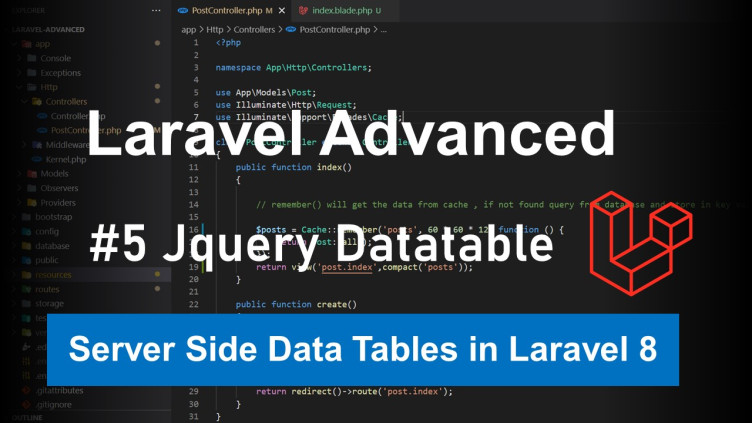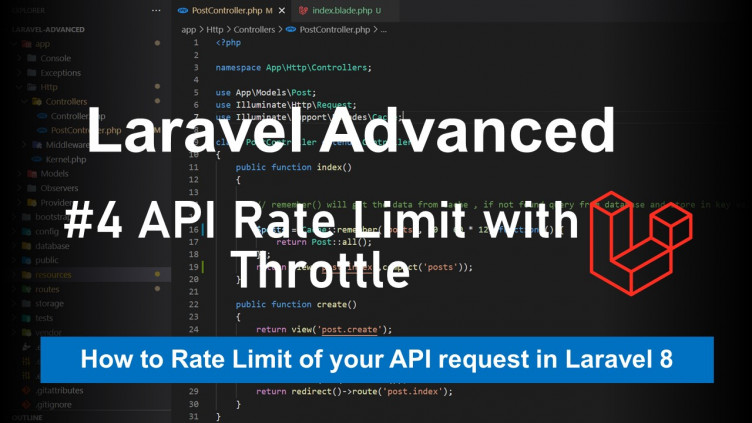In the ever-evolving landscape of web development, creating a full-fledged Point of Sale (POS) system demands a powerful combination of backend and frontend technologies. This blog will guide you through the creation of a robust POS system using Laravel 10 as the backend framework and React 18 as the frontend library. We'll explore the intricacies of each component, including the use of MUI for UI design, MobX for state management, Yup for schema validation, the latest React Router 6 for app routing, and JWT authentication for securing the Laravel API backend.
To support do Like and Subscribe to the Youtube channel. You support encourage me more to make these kinds of projects tutorial in the future.
Technology Stack Overview
Frontend Technologies:
React 18:
React 18 is the latest version of the popular JavaScript library for building user interfaces. Its concurrent mode and suspense feature bring improvements in rendering, making the user experience smoother and more responsive. With its component-based architecture, React simplifies the process of creating reusable UI elements.
React Router 6:
React Router 6 is the latest iteration of the React Router library, providing a declarative and efficient way to handle navigation in React applications. It introduces a simplified API and improved navigation capabilities, making it an excellent choice for building dynamic single-page applications.
MobX:
MobX is a state management library that simplifies the management of application state by using observable data structures. It seamlessly integrates with React, allowing for efficient state updates and ensuring that changes in state trigger automatic re-renders of the UI components that depend on that state.
MUI (Material-UI):
Material-UI is a React UI framework based on Google's Material Design principles. It provides a set of pre-designed React components that adhere to a unified design language, enabling developers to create aesthetically pleasing and consistent user interfaces. MUI's components, coupled with React, expedite the development of a visually appealing frontend.
React Hook Form:
React Hook Form is a library for managing forms in React applications. It simplifies form validation, handling, and submission by utilizing React hooks. With its straightforward API, React Hook Form streamlines the form-building process, ensuring a smooth and controlled user input experience.
Yup:
Yup is a JavaScript schema validation library commonly used with React Hook Form. It allows developers to define and enforce the structure of data, ensuring that user input adheres to specific criteria. This enhances the reliability and security of the application by preventing invalid data from being processed.
Backend Technologies:
Laravel 10:
Laravel 10 is the latest version of the PHP web application framework renowned for its elegant syntax and developer-friendly features. It provides a robust foundation for building secure, scalable, and maintainable backend systems. Laravel's modular structure and expressive syntax expedite the development process, making it an excellent choice for building complex applications.
JSON Web Tokens (JWT):
JSON Web Tokens are a standard for securing the transmission of information between parties. In the context of our POS system, JWT serves as a secure means of authentication for the Laravel backend. It enables the generation of tokens that verify the identity of users and authorize them to access specific resources within the system, enhancing overall security.
Chapter 1: REST API for Authentication
Security is paramount when dealing with sensitive information in a POS system. Laravel 10 provides a solid foundation for building a secure backend with its robust authentication system. Using JSON Web Tokens (JWT) adds an extra layer of security to our REST API.
By setting up a RESTful API for authentication, we ensure secure user authentication and authorization processes. Laravel's authentication scaffolding makes it convenient to implement login, registration, and token generation functionalities. The generated JWT tokens will be crucial for securing the communication between the frontend and backend, ensuring that only authorized users can access sensitive data and perform specific actions within the POS system.
Chapter 2: Customer Management
Efficient customer management is at the heart of any successful POS system. With React 18 on the frontend, we leverage the power of MUI (Material-UI) to design a clean and user-friendly interface. MUI provides a comprehensive set of React components, enabling us to create a visually appealing and responsive customer management interface.
MobX, a state management library, comes into play to handle the dynamic state of customer data. With MobX, changes to customer information trigger automatic updates throughout the application, ensuring a seamless user experience. React's component lifecycle combined with MobX makes it easy to implement features like adding and editing customers, with real-time updates reflecting across the entire system.
Chapter 3: Product Management
Accurate product management is crucial for maintaining inventory, setting prices, and ensuring smooth transactions. Leveraging the capabilities of Laravel 10, we create a robust API for managing product information. This API allows us to perform actions such as adding new products, updating prices, and managing stock levels.
On the frontend, React 18, coupled with MUI, enables us to design an intuitive product management interface. React's component-based architecture makes it straightforward to create reusable components, facilitating the seamless integration of features like product price adjustments and stock level updates.
Yup, a schema validation library, adds an extra layer of validation to ensure that the data entered by users conforms to the expected structure. This not only enhances the overall user experience but also helps prevent errors that could compromise the integrity of the POS system.
Chapter 4: Order Management
Order management is the backbone of any POS system. React Router 6, the latest version of the popular routing library, ensures smooth navigation between different sections of our application. With React Router 6, we can implement a flexible and dynamic routing system, allowing users to move seamlessly between order creation, customer management, and product updates.
Stock validation becomes crucial in the order management process. Laravel's backend API, combined with React on the frontend, ensures that orders are only processed if the products are in stock. This prevents discrepancies between the system's records and the actual availability of products, minimizing errors in transactions.
To add the finishing touch to our POS system, we implement an invoice printing feature. This feature utilizes both the frontend and backend technologies to generate and print invoices seamlessly. The integration of React for the user interface and Laravel for the backend ensures a cohesive and efficient invoice generation process.
In conclusion, the marriage of React 18 and Laravel 10 in building a Point of Sale system brings together the strengths of two powerful technologies. From secure authentication to dynamic customer and product management, the combination of MUI, MobX, Yup, React Router 6, and JWT authentication creates a robust and feature-rich POS system. The journey from REST API implementation to order management showcases the versatility and efficiency of this technology stack, making it an ideal choice for developers aiming to create a sophisticated and reliable POS solution.
Project Github Repo
Frontend: https://github.com/subhadipghorui/pos-react-frontend
Backend: https://github.com/subhadipghorui/pos-laravel-backend




0 Comments